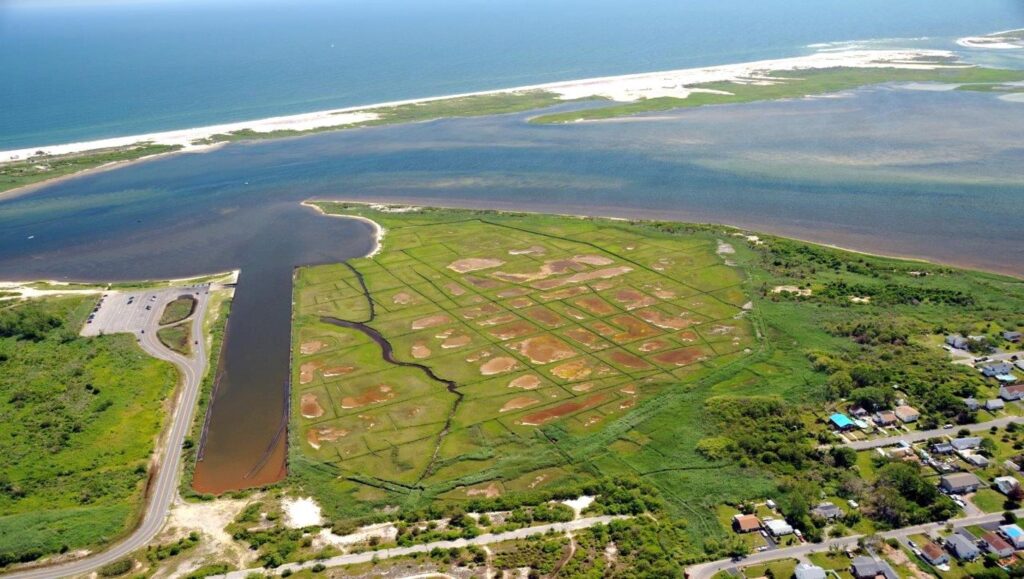Dear Governor Andrew M. Cuomo,
I am writing to express my strong encouragement for New York State to specifically direct funding to tidal wetland protection and restoration initiatives to support coastal resiliency, or the defense against extreme weather events which are becoming more frequent and exacerbated by climate change and sea level rise. As you know, New York contains five estuaries which are managed by the New York State Department of Environmental Conservation in cooperation with other state, local, and federal government agencies. Tidal marshes within New York’s estuarine areas are not only some of the most productive habitats in the world, supporting numerous species of finfish, shellfish, terrestrial wildlife, and avian species, they are also vital for improving water quality by filtering stormwater runoff and metabolizing excess nutrients. This ecological service is critical for clarifying the water and creating more suitable conditions for natural resource and commodity production and supporting the State’s economically important commercial and recreational estuary-related industries such as the fishing and tourism.

Another significant ecosystem service that tidal wetlands provide is coastal resiliency in the face of impending climate change and sea level rise. Healthy functioning tidal marshes can protect public health and infrastructure by providing natural resistance to storms and flooding through rainwater absorption and protecting shorelines from erosion by buffering wave action and sediment capture. So coastal wetlands are a critical line of defense against extreme weather events which are becoming more frequent and exacerbated by global climate change and sea level rise trends. These environments also play an important role in the global carbon cycle due to their ability to act as a carbon sink by accumulating and sequestering carbon dioxide in vegetation and soil organic matter. Tidal wetland carbon sequestration abilities may be significant in relation to the urgency to reduce global carbon footprints contributing to warming and climate change.
Although coastal wetlands are economically and ecologically invaluable to the State of New York, many of these areas have become severely degraded to point where the ecosystem services they provide are compromised. Historically, a number of anthropogenic stressors during the last century have had major impacts to tidal wetlands in New York. Public nuisance and health concerns about marsh mosquito populations during the late 1800’s into the early 1900’s led to the promotion of the historical practice of grid-ditching existing wetlands. Filling of low-lying lands for residential and commercial uses as well as the construction of roads, bridges, and canals has led to severe wetland acreage loss. And cross-continental travel and trading, induced the proliferation of non-native plant species which effectively displace diverse native vegetation and compromise the integrity of tidal wetland ecosystems.

Currently New York’s most densely populated communities are in close proximity to coastal wetlands and have caused degradation of these environments due mainly to urbanization. Excess nitrogen inputs and other pollutants to New York’s coastal estuarine systems from human land uses generally originate from fertilizers for agriculture, commercial, and residential applications; stormwater runoff and combined sewer overflow discharges; and antiquated cesspool and septic systems. These anthropogenic stressors from terrestrial land uses affect tidal wetland functioning and compound the vulnerability to coastal ecosystems and communities in the context of impending climate change and sea level rise.
With sea levels rising and increasing storm intensity and frequency, New York’s coastal communities need to be better prepared for future climate related scenarios. Public health and safety, reduced risk of structural and non-structural damage, and improved recovery plans should be at the forefront in resiliency planning. But protection and restoration of the natural estuarine environment and its ability to mitigate storm damages should also be of highest priority. For these reasons, I strongly urge you to make adequate funding available for tidal wetland protection and restoration to support the coastal resiliency of New York.
Sincerely,
Jennifer McGivern
Senior Environmental Analyst and Environmental Advocate
Cc: NYSDEC Commissioner Basil Seggo
NYSDEC Division of Fish, Wildlife and Marine Resources




This is excellent: well organized, detailed and with a clear and compelling argument throughout. I just read this article on NYC’s recent clean energy plan, so maybe now is the time! https://cleantechnica.com/2020/04/05/and-so-it-begins-worlds-11th-biggest-economy-pitches-renewable-energy-for-covid-19-recovery/?
Thanks for this letter! Cuomo is proposing a $3 billion bond to fund “environmental upgrades.” This is not a done deal and if the budget director can’t get the money for other capital projects it’ll be sacrificed. So I think in order for the budget to stay on the ballot, public pressure is a key.
Is this something that is able to be approved at the State level? I recently learned that large infrastructure projects are approved by the Federal Government. This issue you bring up is an important one and one that I am very interested in as my home New Orleans, LA is also a port city as well as the entire state is having issues of erosion in addition to the water rising.
And I heard on Friday the disappointing news that the bond act will not go on the November ballot? It’s frustrating that the city and state have no money (or, they have some money, but there’s an oder of priorities), and the feds are unwilling to help.
Wetland restoration wouldn’t be considered infrastructure; it would be non-structural though these projects do require US Army Corps of Engineers permit approvals. Often grant funding does emanate from the Federal Gov’t but is funneled through state and local grant programs.
This is a great letter that spells out the benefits of these ecosystems (and I am reading this right after reading the Wilson excerpts on biodiversity). I wonder, however, how wetland protection/restoration programs take into account forecasted sea level rise. I know these wetlands serve as our buffer, but is there a way to protect them from going underwater?
Yes, this is a great, detailed letter that I hope will reach Cuomo’s office! I did have this similar question and concern (Not to sound too pessimistic!).
Wow. Great letter! Thank you for sharing! Would love to hear more on this.
Thanks for the comments and interest!
So, tidal marshes have the ability to accrete, meaning build up vertically via natural sedimentation, as well as retreat, meaning migrate inland. But these dynamics depend largely on the health of the vegetation and their root structures to hold on to the soil sediments during tidal fluxes and also the availability of adjacent upland areas which is unfortunately scarce due to human development very close to the coastline.
The public is generally passionate about preserving sandy beaches for recreation purposes and thus dune building is widely supported since, similarly, dune grass plants buffer erosion and their roots hold the sand to help rebuild the beach. Unfortunately not as much public interest goes into wetlands because they are mucky and stinky. But I’m a fighter for the underdog!